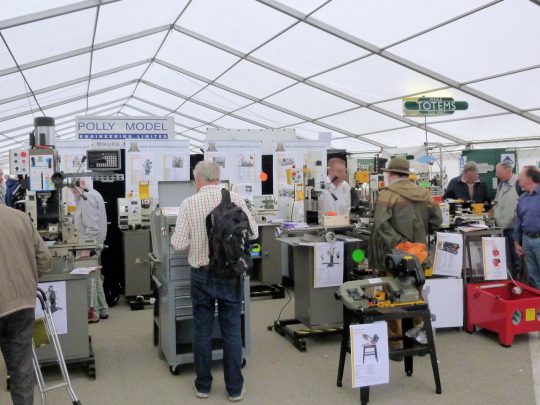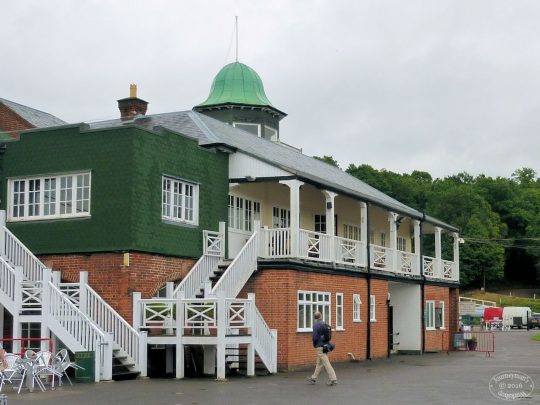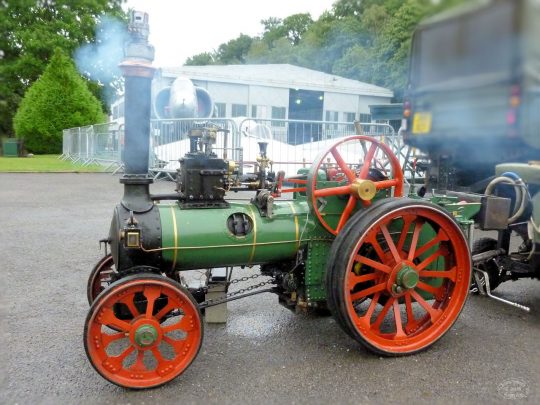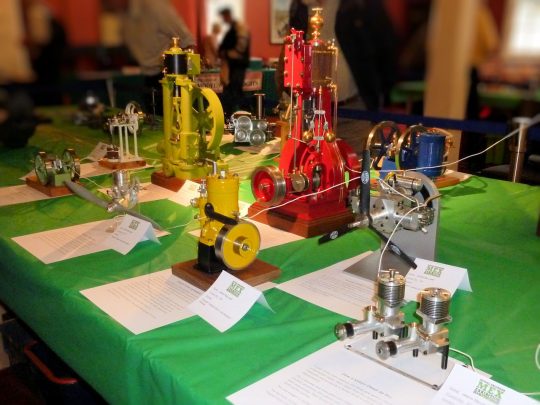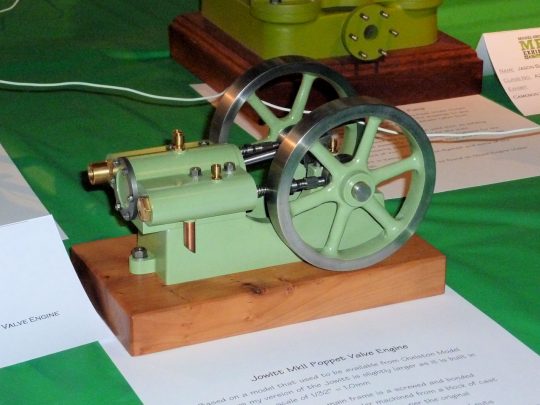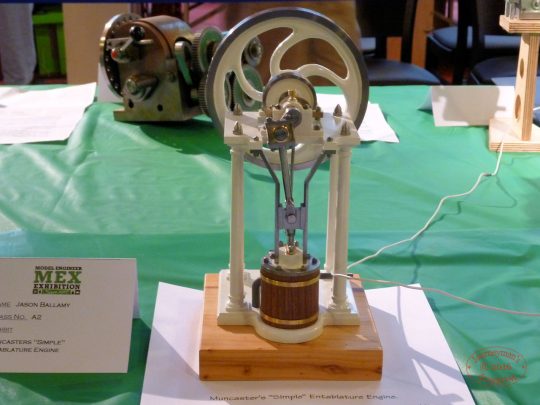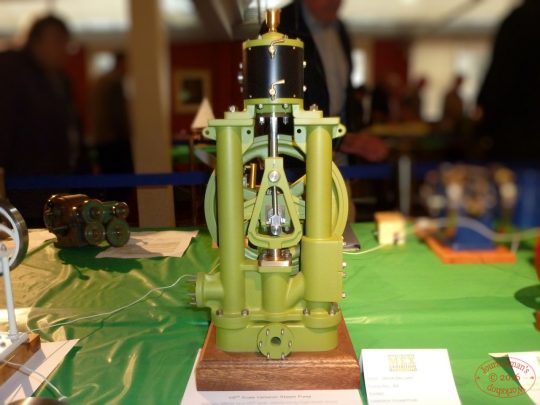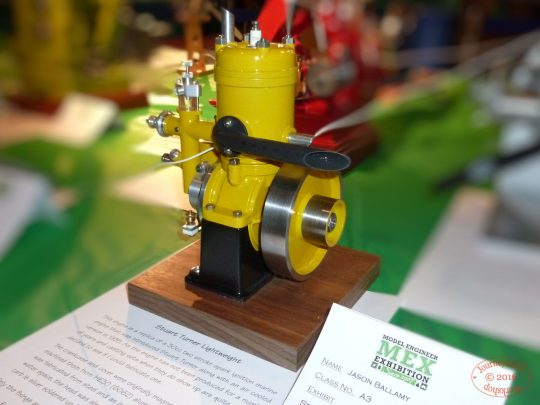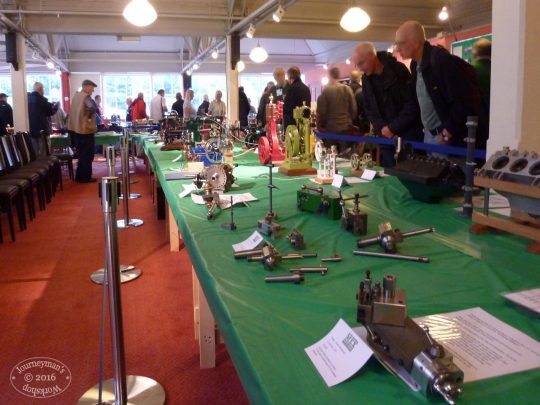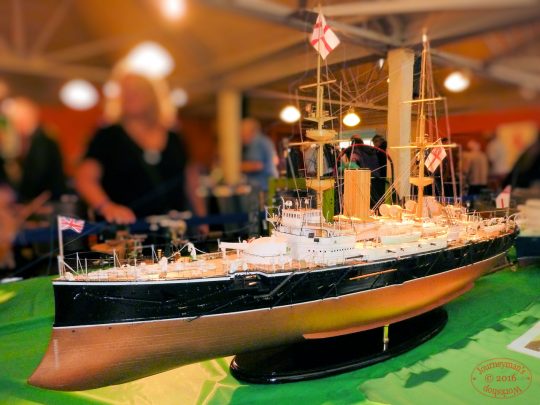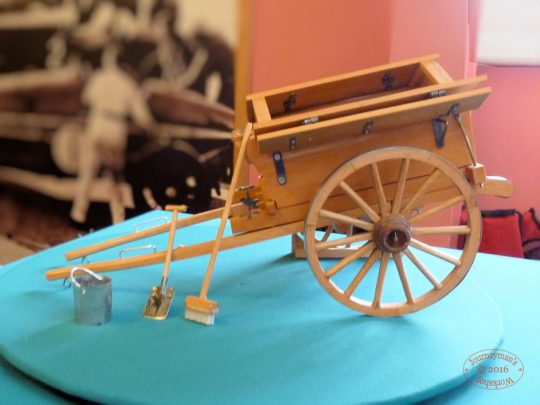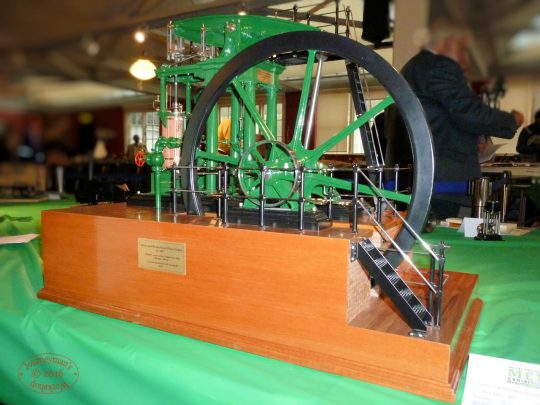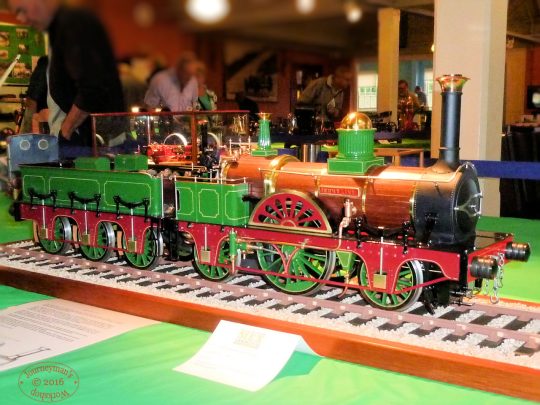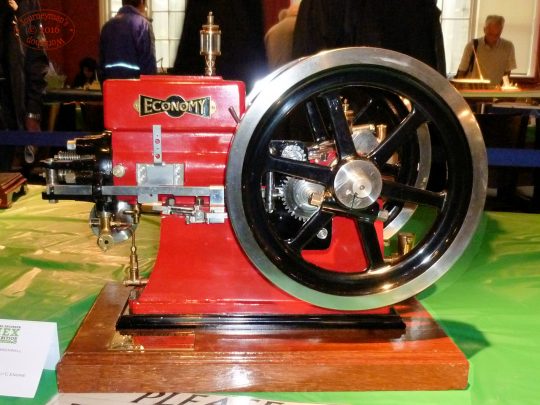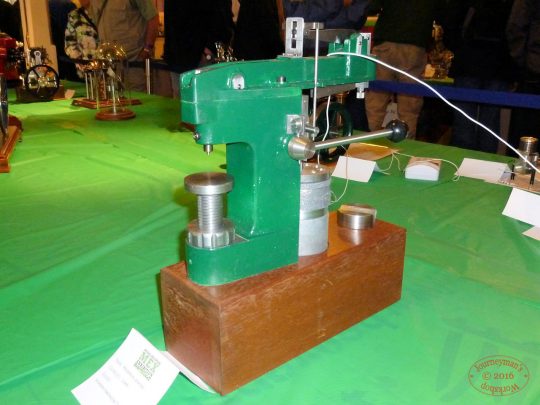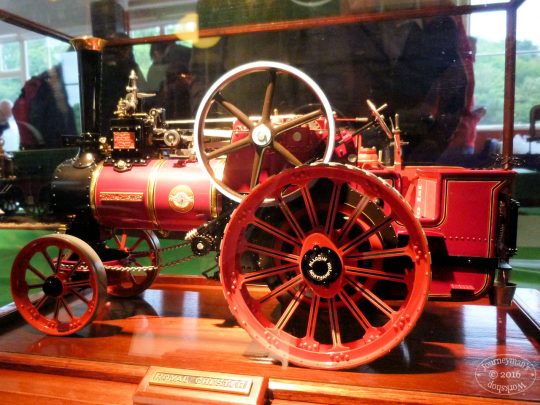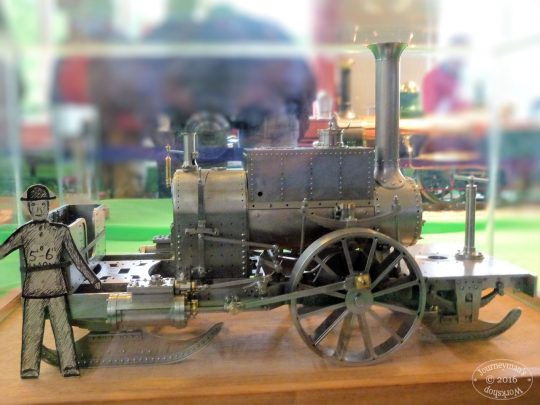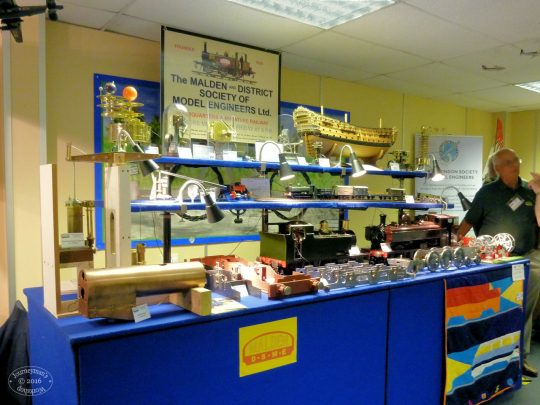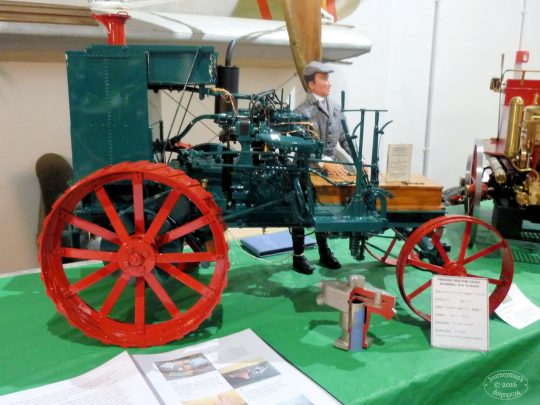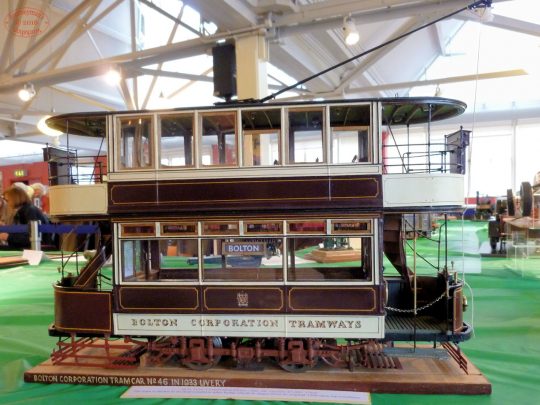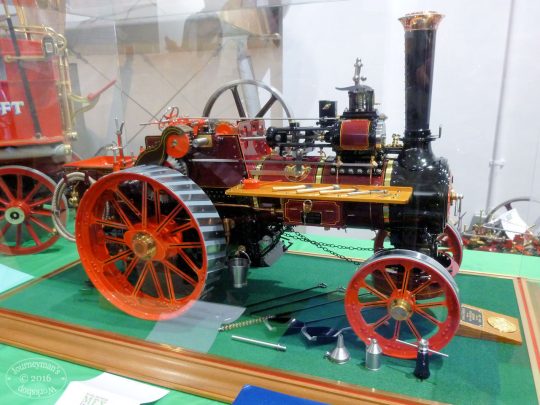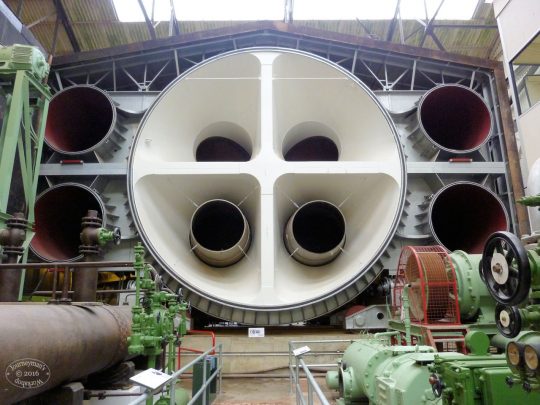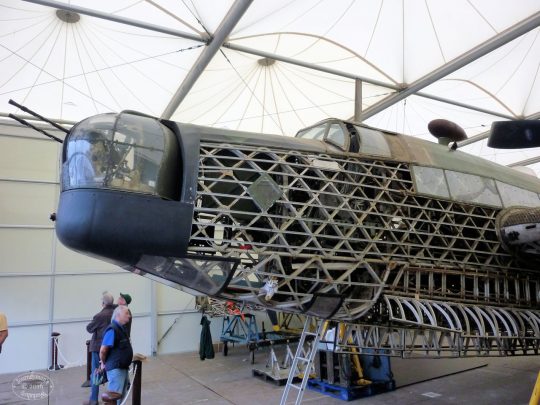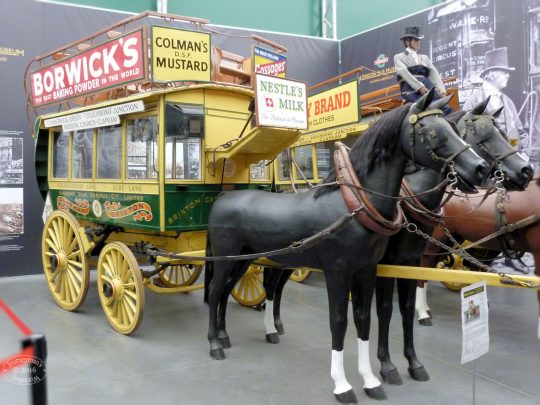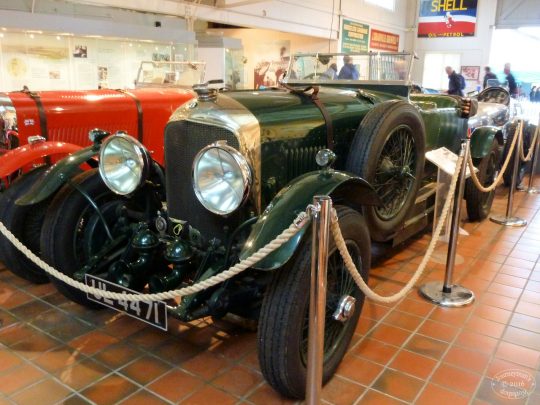The Model Engineer Exhibition moved to Brooklands Museum in Surrey this year after a short break. Set inside part of the old Brooklands motor racing circuit, the Museum celebrates the motor racing and aviation history of the area. Brooklands Circuit was the world’s first purpose-built motor racing circuit, built by local landowner Hugh Locke King in 1906. The circuit is 2¾ miles long with steeply banked curves and an extra ½ mile start / finish straight in front of the clubhouse. Much of the original concrete circuit remains but you wouldn′t want to race on it now, the surface is very rough and I doubt it was exactly smooth when it was new. (Click On An Image For A Larger View)

With both the museum exhibits and the exhibition there was plenty to see. The competition and loan models together with the club stands were based in the museum whilst the trade stands were in a large marquee. On-site catering was good and there was plenty of seating both in the restaurant and close to the models. There was also plenty of outside seating available once it stopped raining and dried out.
The traders area was well supported but some of the “usual” suppliers were noticeable by their absence. A view inside the marquee (2) showing Chester Tools stand, quite a bit smaller display than I have seen before. With the increase in on-line sales and increasing costs of attending a show I think this will become the norm for future exhibitions. I had a quick look round but my wallet stayed resolutely in my pocket. Off to the model displays which were based in and around the clubhouse (3), built around 1907 it houses the members billiards room, the clerk of the course office, and you could find similar buildings on most horse racing courses of the period.
On the way to the main displays I found these outside. A 7¼” battery model of London Transport loco William Penn (4) giving rides by Surrey 7¼” Club and this traction engine raising steam ready for the days work (5) couldn′t see a makers plate and there was no one nearby to ask, probably in the truck out of the rain. This was one of only two traction engines in steam whilst I was there.
This section might be called “Jason′s Corner”! It features some of the engines displayed by Jason Ballamy, a regular contributor to the Model Engineer website. Several of these engines (6) have featured in the forums and it was very good to see them in real life. Jason has described the Jowitt engine (7) in some detail with plenty of photos but to see the real thing is excellent. Muncasters “Simple” Entablature Engine (8) also features in the forums and is discussed and described at some length.
The Cameron Steam Pump (9) is subject of a multi-part construction guide on the Model Engineering Website and to be able to see the finished model is great. As you can probably tell I am a bit of a “JasonB” fan and just to finish off a Stuart Turner Lightweight (10) in Fiat yellow – fantastic. The last photo in this group (11) is a general view of the Napier Room where most of the competition and loan models were displayed.
This next gallery is also of items displayed in the Napier Room. HMS Renown is a beautiful scratch built model (12) in 1/96 scale by A.C. Dutton of the 1895 Royal Navy battleship. The Model Wheelwrights had a good display, as usual, and I selected this Covered Night Soil Cart complete with Shovel and brush (13) as I thought it was a bit different, unfortunately no makers name that I could see. I can′t stay away from stationary engines too long and this Kittoe and Brotherhood Beam Engine (14) by Geoffrey Goodchild I thought very good. The original engine can be seen at Coldharbour Mill in Uffculme Devon.
For the railway enthusiast this 3½ gauge Jenny Lind (15) by Peter Wardropper would take some beating. The original was built for the London Brighton and South coast railway in 1847 and the model is to an LBSC design. Back to stationary engines, this time a nicely modelled Economy hit and miss engine (16) by Raymond Greenwell. There wasn′t a huge amount of tooling on display but this Vickers Hardness Tester (17) by Roderick Jenkins has recently featured in Model Engineers Workshop and looks to be very well made.
Still in the Napier Room was this glass cased loan model of Alchin′s “Royal Chester” traction engine (18) by Cherry Hill (now owned by Nicholas Bomford). This was next to a work in progress also from Cherry Hill (who was at the exhibition) of Nathaniel Grew′s Ice Locomotive, the original apparently was used in Russia.
This next gallery shows models from other rooms at the exhibition, not entirely sure where and I seem to have mislaid some of the label details! There were about 30 clubs at the show in total and The Malden and District Society of Model Engineers (20) had a good display in education room 2. George Punter came all the way from Queensland to exhibit his excellent working model of a 1913 Saunderson and Mills tractor (21) the original would have cost you £375. Somewhere nearby I found this Heinrici hot air engine (22) pumping water round the duck pond.
To complete what can only be a very small sample of the models on show is this fine scratch built model by Ashley Best of Bolton Corporation Tramcar No. 46 (23) in 1933 livery. I found another model of Royal Chester (24), the Alchin traction engine, in 1½ scale by Andrew McLeish replete with all it′s accessories.
Apart from the cars Brooklands Museum is also home to a good deal of aviation history. One of the first UK aerodromes was built on the site and many well known plane builders had workshops here. Barnes Wallis spent much of his working life at Brooklands designing and developing the Wellington bomber and the Bouncing Bomb to name just two of his achievements. The Barnes Wallis Stratosphere Chamber around which much of the museum is based was a major research tool for years enabling effects of pressure and temperature on planes to be explored. The Great Door (25) can be moved to the left to seal off the chamber and it was possible for technicians to enter and leave the chamber whilst in operation via an airlock. The photo also shows some of the plant needed to control the chamber′s environment. The wheels that the door slides on can be seen lower right just above the green vacuum pump, the chamber pressure could be lowered to simulate an altitude of 32,000 feet.
There are several complete aircraft on display outside and I went aboard the Vickers Vanguard cargo plane, the cockpit (26) looks nothing like a modern plane, not a display screen or keyboard in sight. I tried to get a shot of Concorde (27) but decent photos are a little difficult as it is currently a bit of a building site while displays are being relocated. Also at the museum having just been moved to a new home is one of only 2 surviving Wellingtons (28). This one was recovered from Loch Ness in 1985 and is currently being restored.
Brooklands is also home to the London Bus Museum and they have an large collection of vehicles from this c1890 Four-Light “Garden-Seat” Horse-Bus (29) up to more familiar modern offerings.
Racing cars, of course, feature prominently including the iconic 4½ litre Bentley (30) to this rake of Grand Prix racers (31) and even a McLaren (2007) race simulator you can drive.
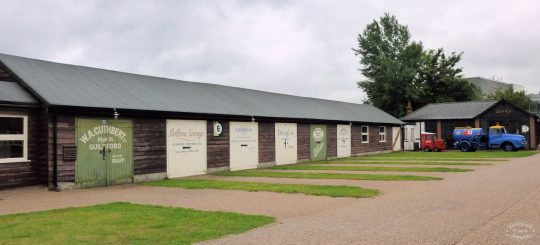
The exhibition might have been slightly smaller than in previous years but the quality of models on display was exemplary. The venue itself is fascinating and worth a visit in it′s own right, the last picture (32) is of the “Lock-Ups” which were built as garages to prepare cars for racing, they currently house a cycle display.
